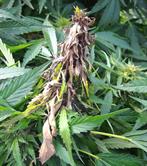acespicoli
Well-known member
Integrated pest management - Wikipedia
- Acceptable pest levels
- Preventive cultural practices
- Monitoring
- Mechanical controls
- Biological controls
- Responsible use

Cannabis IPM - Insect Pests and Diseases
Since the legalization of Cannabis sativa in Canada and many of the US states, production of this crop both indoors and outdoors has increased substantially. Like all agricultural crops, cannabis is susceptible to a broad spectrum of insect pests and diseases and their management is critical...
Integrated Pest Management - What Is It & How Do I Implement An IPM Program?
Integrated Pest Management (IPM) is a process that is used to control pest populations while minimizing the impacts on people and the surrounding environment. Focusing mainly on long-term pest prevention, a successful IPM program utilizes a combination of control methods including biological...
www.arbico-organics.com

IPM in Hemp: Managing Pests in a "New" Crop
With hemp recently legalized for commercial production in the United States, growers are in need of integrated pest management (IPM) guidance. A new profile in the open-access Journal of Integrated Pest Management offers a current synopsis of existing research on insect and arthropod pests of...
 entomologytoday.org
entomologytoday.org
Please, come share you knowledge, link your threads. Let us discuss different methods
 welcome!
welcome!
Last edited:







